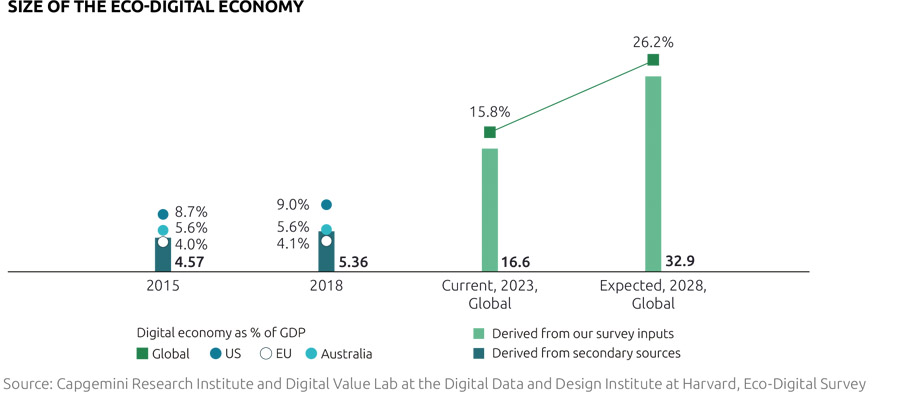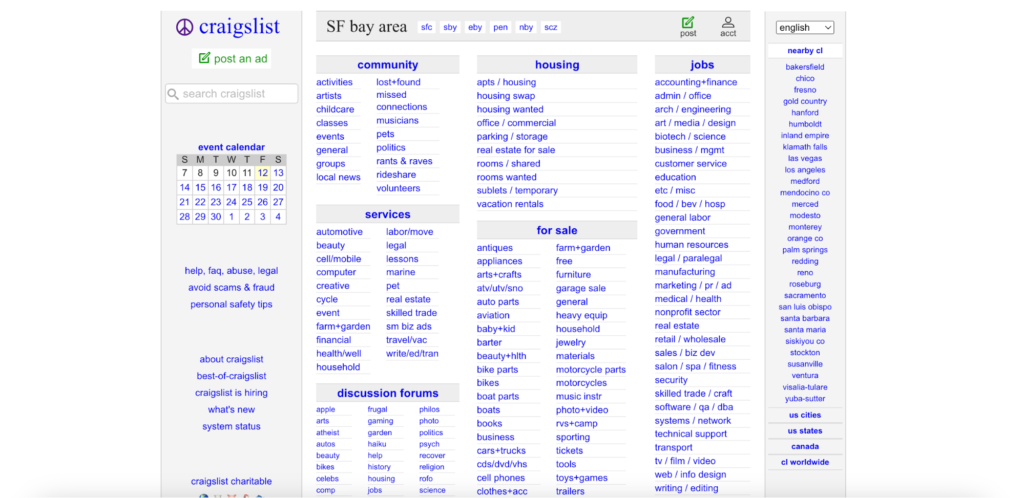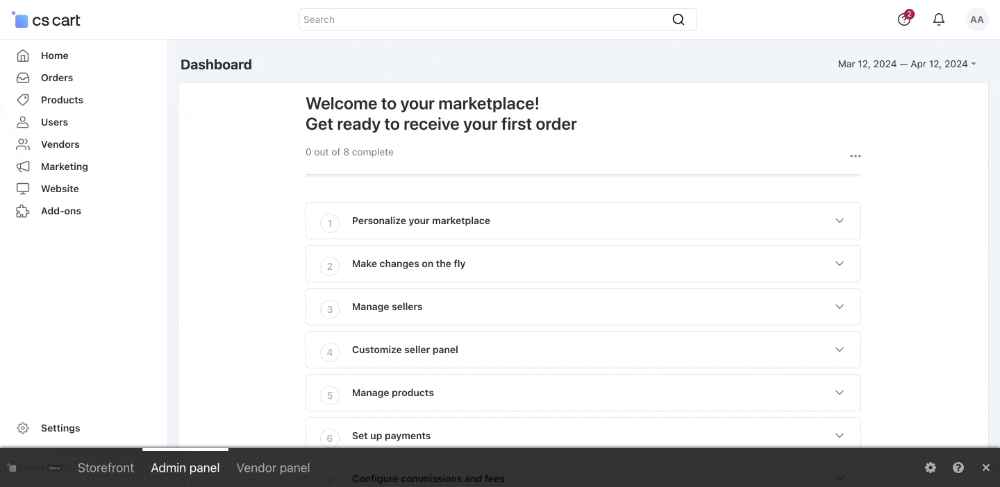Platform vs Marketplace: Understanding the Distinctions
Table of Contents
- Introduction
- Section 1: Understanding Marketplaces
- Section 2: Understanding Platforms
- Section 3: Marketplace vs Platform—The Key Differences
- Section 4: Selecting the Right Solution for Your Business
- Conclusion
- FAQ
Introduction
The digital economy keeps growing, bringing us new ways to shop and sell online through marketplaces and eCommerce platforms. These days, anyone can start their own online store or sell products on a big online marketplace. Even though they might seem similar, platforms and marketplaces have different roles in e-commerce.

Online marketplaces and other types of eCommerce platforms and eCommerce software are a part of the digital economy. And in this article, we’ll explain the differences between these entities clearly.
We’ll look at how each type of service works, whether you’re planning to open an eCommerce store or just want to shop smarter online. You’ll learn what makes an eCommerce platform different from an online marketplace and how they use customer data to improve your shopping experience.
Section 1: Understanding Marketplaces
Definition and Characteristics
Think of an online marketplace as a giant virtual mall. In this digital mall, you can find stores from many different sellers all under one roof. Each seller has their own variety of products, just like in a real mall where you walk from shop to shop checking out different items. This is what we mean when we talk about an online marketplace in the context of e-commerce.
The main features of online marketplaces include:
- Multiple Sellers: Just as a mall has many different stores, an online marketplace features a variety of sellers. This gives you a lot of choices all in one place.
- Diverse Product Listings: Each seller in the marketplace offers different products. This means you can find a wide range of items—from clothes to gadgets—all on the same website.
- Transaction Facilitation: The marketplace itself helps you buy what you want. It’s like the mall providing you a cashier at every store; you pick your items, and the marketplace handles the checkout process.
Marketplace platforms make shopping convenient by bringing together lots of potential customers and sellers. They use customer data to make sure the products you see are what you might want to buy, enhancing your shopping experience. These platforms are different from having your own online store, where you handle everything from sales to customer interactions on your own eCommerce platform.
Types of Marketplaces
When we talk about types of marketplaces, we’re really discussing who sells to whom. Each kind of marketplace has a different target audience and business model. Here’s a simple breakdown:
- B2B (Business to Business): These are online marketplaces where businesses sell products or services to other businesses. Imagine a company that sells office furniture directly to other companies that need to furnish their offices.
- B2C (Business to Consumer): This type is what most of us are familiar with. Businesses sell directly to the consumer. Amazon is a prime example, where you can buy everything from books to electronics directly from businesses.
- C2C (Consumer to Consumer): In these marketplaces, regular people sell items to other people. eBay and Craigslist are great examples. On eBay, you might sell an old camera to someone who needs it. On Etsy, you could buy handmade crafts directly from the maker.

These different marketplace models cater to specific needs. B2B marketplaces might focus on bulk pricing and long-term relationships, while B2C marketplaces often prioritize wide product selection and quick delivery. C2C platforms are great for finding unique or second-hand items and often involve personal interactions between buyer and seller.
All of these eCommerce marketplaces handle payment processing to make transactions smooth and secure. They connect buyers and sellers in a structured environment, making it easier for each party to get what they need. Whether it’s a small homemade crafts shop on Etsy or a large electronics seller on Amazon, each follows a specific business plan tailored to their eCommerce marketplace.
Benefits and challenges
Benefits
For both sellers and buyers, online marketplaces offer a range of benefits:
- Access to Potential Customers: Sellers get a platform with a large target audience already in place, which means they can reach more people than they might through their own eCommerce website.
- Ease of Use: Buyers enjoy the convenience of online shopping from various sellers all in one spot. This can include everything from comparing prices to exploring different products without needing to visit multiple eCommerce websites.
- Streamlined Payment Processing: Both buyers and sellers benefit from built-in payment systems that make transactions safe and easy. This means less hassle in managing finances and more time enjoying shopping or selling.
Challenges
Despite the benefits, there are challenges that both marketplace operators and participants face:
- Control: Sellers often sacrifice some level of control when they join a marketplace. Unlike an own eCommerce website, sellers on marketplaces may not have complete control over their customer interactions or brand presentation.
- Competition: With so many sellers in one place, it can be tough to stand out. Sellers might need to invest more in marketing efforts and work harder to build their own brand awareness within the marketplace.
- Dependence on the Marketplace Operator: Sellers are somewhat at the mercy of the marketplace’s rules and fee structures, which can change. For marketplace operators, keeping a balanced and fair platform while growing their own business is a constant challenge.
- Complexities in Targeting: Both marketplace operators and sellers must continually refine how they target their audience. This includes understanding customer needs and adjusting marketing strategies accordingly, which can be complex and resource-intensive.
Marketplaces are beneficial for expanding reach and simplifying the buying and selling process, but they require careful consideration of the trade-offs in terms of control and competition.
Section 2: Understanding Platforms
Definition and Characteristics
In e-commerce, a platform is like the land and tools you need to build a house. In this case, the house is your online store. An eCommerce platform provides all the foundational software you need to create and manage your online marketplace or individual eCommerce store. It’s the underlying system that makes your online business possible.
Key Characteristics of eCommerce Platforms:
- Support for Online Store Creation: eCommerce platforms offer tools that help you build your own online store. Think of it as a kit that comes with everything from the design of the shop front to the checkout counter.
- Payment Processing Integration: Just as a store needs a cash register, an eCommerce platform includes payment processing. This helps manage all the transactions customers make, ensuring that buying and selling are smooth and secure.
- eCommerce App Development: Many eCommerce platforms provide capabilities to develop additional apps or integrations. This can be similar to adding a coffee shop or a gift wrapping service to a physical store, enhancing the shopping experience and offering more features to customers.
Platforms serve as a crucial backbone for both individual businesses looking to create an eCommerce store and for larger marketplace vs individual seller models. They offer the technology and tools necessary to operate in the digital economy effectively, managing everything from product listings to customer data.
Types of platforms
E-commerce platforms come in different models, each with its own benefits depending on your needs as a business owner. Here’s a simple look at the main types:
- SaaS (Software as a Service): This model is like renting an apartment. You pay a monthly fee to use the eCommerce platform, and the provider takes care of all the maintenance, updates, and security. It’s a convenient option if you want to focus more on selling and less on tech issues. Shopify is a popular example of a SaaS eCommerce platform.
- Open-Source Platforms (on-premises): Using an open-source platform is like building your own house. It’s free to use and modify, but you need to manage everything yourself or hire experts to help. This gives you complete control over your ecommerce store, from how it looks to how it operates. Magento and CS-Cart are well-known open-source platforms.
Examples of Popular E-commerce Platforms:
- CS-Cart: Great for businesses looking for complete control over their platform, allowing them to tailor everything from product offerings to customer analytics. CS-Cart allows for building online stores and eCommerce marketplaces of different types and business models. Free version is available, too.
- Shopify: A user-friendly SaaS platform that makes it easy to set up a standalone website quickly. It handles everything from payment processing to security, letting you focus on customer satisfaction. It’s the most popular SaaS online store platform with small businesses.
- Adobe Commerce (former Magento): Known for its robust features and flexibility, perfect for businesses that want to deeply analyze customer behaviors and customize their eCommerce experience. It’s very flexible but requires technical expertise to deploy, manage and maintain.
- Sharetribe: Ideal for creating a simple marketplace, where you facilitate business between multiple sellers and buyers.
- Dokan: A WordPress plugin that transforms a site into a multi-vendor marketplace, providing tools for business facilitation and managing a diverse range of product offerings.

Each type of eCommerce platform offers different levels of control and capabilities, whether you’re looking to launch a simple standalone website for online sales or a complex marketplace that requires extensive customization and detailed customer analytics. The choice depends on your specific business needs and technical expertise.
Benefits and challenges
Benefits
Using an eCommerce platform offers several advantages for businesses planning to launch their own marketplaces or online shops:
- Offers Ready Tools: eCommerce platforms provide the necessary tools to create a marketplace from scratch. This is similar to getting a complete toolkit that allows you to construct and customize your own store or marketplace.
- Streamlines Operations: Platforms often include features like inventory management and delivery services. Imagine having an assistant who helps you keep track of all your products and another who takes care of delivering your orders to customers.
- Handles Financial Transactions: Platforms manage all the financial aspects of sales, from processing payments to securing transactions. It’s like having a built-in cashier who ensures all money exchanges are safe and accurate.
Challenges
However, there are some challenges businesses may face when choosing and using an eCommerce platform:
- Less Control: When you use a SaaS platform, you might not have complete control over every aspect of your business. This can be like renting a space in a shopping mall where you must follow the mall’s rules for store design and opening hours.
- Profit Margins: Depending on the platform model, businesses might have to pay fees that can eat into profit margins. It’s important to consider how much of each sale will go to the platform and how this affects overall profitability.
- Matching Needs to the Right Platform: Selecting the right platform can be challenging. It’s like choosing a car: you need to find one that fits your specific needs for size, features, and performance. The marketplace model requires different features than a simple online store, so it’s crucial to choose a platform that supports all your business activities, especially if you need specialized functions like handling multiple sellers or large inventories.
In summary, while eCommerce platforms can greatly simplify the process of starting and managing an online marketplace, they also require thoughtful consideration to ensure they align with your business goals and financial strategies.
Section 3: Marketplace vs Platform—The Key Differences
In the digital economy, it’s easy to get the terms “eCommerce platform” and “eCommerce marketplace” mixed up. Let’s break down the key differences between an online marketplace and a platform, which, though related, serve distinct purposes and functions.

expert at CS-Cart
“Many people often confuse “an eСommerce platform” with “an eСommerce marketplace”, but they serve fundamentally different purposes in the digital economy. An eСommerce platform is essentially the toolkit or foundation that businesses use to build and manage their own online stores or marketplaces. It provides the necessary technology and services to operate an eСommerce website effectively.
On the other hand, an eСommerce marketplace acts more like a virtual shopping center where multiple sellers can list their products to a common audience. It’s a ready-made platform where transactions between buyers and sellers occur directly. Think of the platform as the infrastructure—like roads and utilities—while the marketplace is the bustling community that uses that infrastructure to engage and transact.“
Purpose and Functionality
- Marketplaces: The primary purpose of a marketplace is to directly connect sellers with buyers. Think of it as a busy outdoor market where different vendors come to sell their products directly to the public. Marketplaces facilitate this interaction on a digital scale, allowing multiple sellers to list and sell their products online to a broad audience.
- Platforms: In contrast, an eCommerce platform acts as a foundation or a toolkit that enables businesses to build and scale their own websites or digital marketplaces. It’s like the construction tools and materials needed to build market stalls or even set up an entire market. These platforms provide the underlying technology and services necessary for businesses to create their own site, manage content, process payments, and handle other backend operations.
Operational Focus
- Marketplaces: Managing a marketplace involves overseeing the interactions between multiple sellers and buyers, ensuring that listings are up-to-date, and transactions are processed smoothly. It’s about maintaining a vibrant and engaging marketplace where everyone can find what they’re looking for.
- Platforms: Deploying a platform is more about providing and maintaining the underlying technology that supports eCommerce websites. This includes offering website builders, managed platforms for hosting, and tools for scalability. The focus is on ensuring the platform remains robust, secure, and capable of supporting a variety of eCommerce activities.
User Interaction
- Marketplaces: These facilitate direct consumer engagement. Buyers visit marketplace websites where they can interact with various sellers, compare products, and make purchases directly. It’s all about the customer-facing side of e-commerce.
- Platforms: Platforms typically focus on the backend support for businesses. They provide the tools and technology that business owners use to set up and manage their own website or online store. This might not be directly visible to the end consumer but is crucial for the smooth operation and scalability of eCommerce sites.
In summary, the main difference in platform vs marketplace lies in their roles: platforms provide the tools and technologies (like a builder provides bricks and mortar), while marketplaces use those tools to create interactive spaces where buyers and sellers can connect and transact. Each has its own focus and functionality within the broader context of e-commerce.
Section 4: Selecting the Right Solution for Your Business
Considerations for Choosing a Platform
When deciding on an e-commerce platform to create a marketplace, you should consider several factors. If you’re leaning towards using a platform like CS-Cart Multi-Vendor, Sharetribe or Dokan, here are some key points to think about:
- Setup Cost and Cost Involved: Understand the initial and ongoing expenses to ensure they fit within your budget.
- Multichannel Selling: The platform should support selling across various channels, allowing you to reach more customers.
- Website Builder: A user-friendly website builder is crucial for setting up your marketplace with minimal technical skills required.
- Direct Access to Technical Support: Since technical challenges can arise, having direct access to reliable support is essential.
- Scalability: The platform should grow with your business, handling more products, vendors, and customers as your marketplace expands.
Success Stories
Examining successful examples can illustrate the potential of choosing the right platform:
Shopflix
Founded in 2021 in Greece, Shopflix has redefined the marketplace model by ensuring timely delivery and uniform service quality across the country. Some highlights include:
- Average of 1,618,303 active users over the past six months
- 5,000,000 products
- 3,000 sellers
- A new approach to e-commerce with a focus on user experience before and after the purchase.
This platform has shown that with the right business plan and customer engagement strategy, even newer marketplaces can achieve significant impact and success.

ShopClues
Started in 2011, ShopClues quickly became one of the largest online marketplaces in India, often referred to as India’s Amazon. It boasts:
- 12 million monthly visits
- 350,000 vendors
- 28 million products
- 1,000 employees
ShopClues is a testament to how CS-Cart can support massive scale and variety, connecting buyers and sellers efficiently. Check out more outstanding marketplaces built with CS-Cart:
When choosing a platform, consider how these factors align with your business plans and the specific needs of your marketplace. Whether you’re just starting to sell or looking to expand, the right eCommerce platform can provide the foundation you need to succeed. To understand if CS-Cart is the platform you need, check out a free CS-Cart demo, no credit cart needed:
Conclusion
In summary, marketplaces and platforms play complementary yet distinct roles in e-commerce. While marketplaces directly connect sellers with buyers, offering a wide variety of products in one place, platforms provide the essential tools and technologies needed to build and manage these digital environments.
Businesses should carefully consider their specific needs and capabilities when deciding to launch their own marketplace on a certain platform. Making the right choice will not only align with your business goals but also help you succeed in the eCommerce field, which is super competitive these days.
FAQ
Q: What’s the difference between an eCommerce platform and an eCommerce marketplace?
A: An eCommerce platform is like the foundation and tools needed to build and manage your own online store, handling things like payments and inventory. An eCommerce marketplace is like a big online mall where many sellers offer products directly to buyers, it is built upon an eCommerce platform.
Q: How do I choose between using a marketplace or creating my own platform?
A: Consider what you need for your business, like how much control you want over selling and customer interactions. If you want more control and can handle the setup, a platform might be better. If you prefer a ready audience and easier setup, a marketplace could work well.
Q: Can I move from a marketplace to my own platform later?
A: Yes, many businesses start on a marketplace and move to their own platform as they grow. This lets them have more control and better manage their brand and profits.
Q: What technical skills do I need to run an eCommerce platform?
A: It depends on the platform. Some, like Shopify, are very user-friendly and don’t need much technical skill. Others, like Magento, require more knowledge in website development. There are platforms that take the best from both worlds, like CS-Cart.
Q: What challenges might I face in a marketplace?
A: You might face challenges like less control over your business, strong competition, dependence on marketplace rules, and the need for effective marketing to stand out.
Yan Anderson is the Head of Content Marketing at CS-Cart with over 10 years of experience in the eCommerce industry. He's passionate about explaining complicated things in simple terms. Yan has expertise in building, running and growing eCommerce marketplaces. He loves to educate people about best practices, new technologies, and trends in the global eCommerce industry.

